Balance is comprised of three primary systems: visual, proprioceptive and vestibular systems that collectively work together in order to optimize the ability to balance.1 If one or more of these systems are impaired, the ability to balance becomes increasingly difficulty and can lead to falling.
Can balance be improved? Can physical therapy and exercise help balance? The answer to these questions is YES! To improve balance, the aforementioned systems that contribute to overall balance must be challenged. Improving balance has also been shown to reduce the risk of falling in older adult populations.2 Below are five balance exercises that can be performed at home to improve balance while using little to no equipment.
Exercises to Improve Balance
Tandem stance – stand with the arms relaxed and place one foot in front of the others so the heel of the foot in front contacts the toes of the foot behind. Hands may be used for support if needed to avoid loss of balance.
Tandem walking – walk forward placing the heel of one foot in front of the other in contact with the toes. Alternate steps with the feet moving forward.
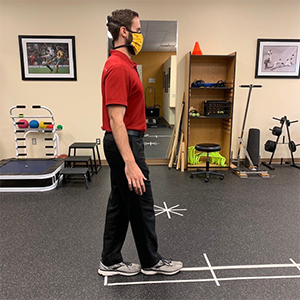
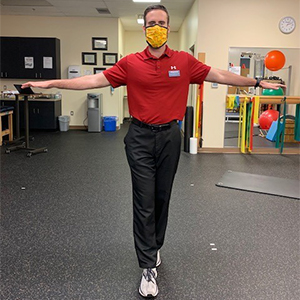
Single limb stance – stand with the arms relaxed and the feet together on the floor. Lift one foot from the floor and balance on the opposite leg.
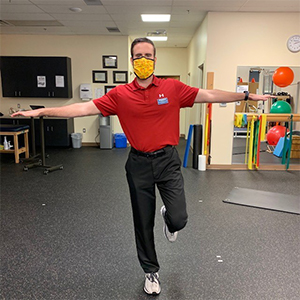
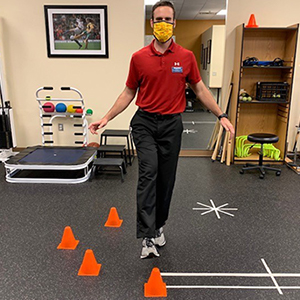
Single limb stance with reaches – stand with the arms relaxed and the feet together on the floor. Lift one foot from the floor and reach forward with that leg, without placing the foot back on the floor, return to the starting position. Repeat with the same leg reaching forward at a 45-degree angle, directly to the side, backward at a 45-degree angle and straight back. Repeat on the other leg.
Single Limb Romanian Deadlift – stand with the feet shoulder width apart with a slight bend in both knees. Lift one foot off the floor. While reaching back with this leg, lean forward at the waist and reach the arms forward. Return to the starting position and repeat on the other leg.
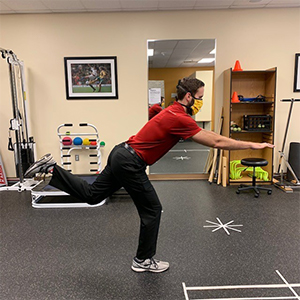
Practice these exercises at-home to improve your balance. If you’ve mastered these exercises, try increasing the difficulty by standing on an unstable surface such as a pillow while balancing. Balance is a critical skill we tend to lose as we age, making it crucial to maintain.
If you’re having difficulty with your balance, reach out to one of our experts for a free assessment. Free assessments are available both in-clinic and virtually through our telehealth service.
The Athletico blog is an educational resource written by Athletico employees. Athletico bloggers are licensed professionals who abide by the code of ethics outlined by their respective professional associations. The content published in blog posts represents the opinion of the individual author based on their expertise and experience. The content provided in this blog is for informational purposes only, does not constitute medical advice and should not be relied on for making personal health decisions.
Citations:
1. Lakie M, Loram ID. Manually controlled human balancing using visual, vestibular and proprioceptive senses involves a common, low frequency neural process. J Physiol. 2006;577(Pt 1):403‐416. doi:10.1113/jphysiol.2006.116772
2. Hafström A, Malmström EM, Terdèn J, Fransson PA, Magnusson M. Improved Balance Confidence and Stability for Elderly After 6 Weeks of a Multimodal Self-Administered Balance-Enhancing Exercise Program: A Randomized Single Arm Crossover Study. Gerontol Geriatr Med. 2016;2:2333721416644149. Published 2016 Apr 26. doi:10.1177/2333721416644149
Brandon Bowers is a doctor of physical therapy and clinic manager at our Cincinnati - Oakley clinic location. He has a passion for treating patients with shoulder injuries and individuals all across the age spectrum. Brandon utilizes blood flow restriction and Astym on a regular basis to help patients get back to living their lives pain free. During the fall he contributes to the Athletico blog as a fantasy football injury expert and has previously spent time in the same role with CBS Sports.

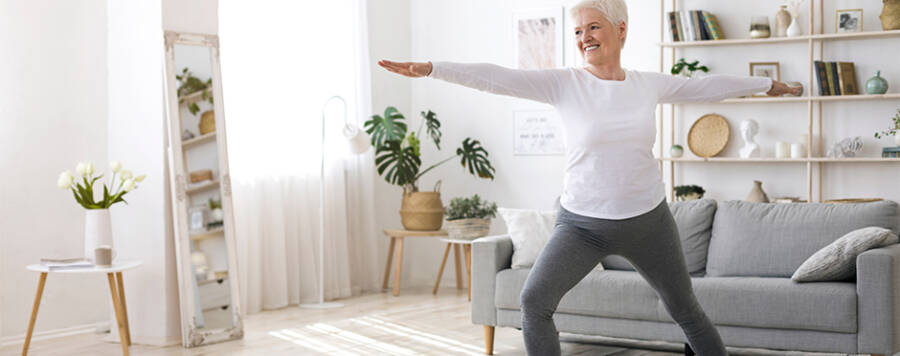 width="900"
height="356"
>
width="900"
height="356"
>

1 Comment
Mary Oplawski
HI,
I have mastered all the exercises I could remember for my groin muscle and hip, and cannot find the specialized exercises that was put on my account during my last visit in Sept. 2023. I know there are many more than the ones I am remembering.
Please re-enter my exercises and let me know where to find them on the Athletico page. I have looking through Health Resources and At-Home exercises and nothing is personalized for me.
Thank you for your help! I really need to have all the exercises mastered and working well for me asap.